|
The research and development of levitation railways has been promoted based on the five-year plan started in fiscal 2000. Challenges to overcome for the establishment of practical technology have included verification of reliability/durability, technology development for cost reduction, and improvement of vehicle aerodynamics. In April 2003, the Ministry of Land, Infrastructure and Transport's Committee for the Evaluation of Superconducting Magnetically-Levitated Transportation System Technology was called into session. Based on the results attained thus far, an interim report was compiled and progress was summarized in the following statement:
"Towards the end of fiscal 2004, steady progress is being made to achieve the preset research and development targets and to establish the basic technologies for the implementation of a superconducting magnetically-levitated transportation system."
In fiscal 2003, verification of the new vehicles introduced in fiscal 2002 was continued. As part of the verification of reliability/durability, continuous running tests and speed improvement tests were performed, and new speed records were achieved. In the Kunitachi Laboratories, the development of basic technologies such as ground coils and superconducting magnets was promoted.
The following developments were sponsored by the Ministry of Land, Infrastructure and Transport.
1. Technology Development on the Yamanashi Test Line
(1) Profile of Running Tests in 2003
On the Yamanashi Test Line, successively, high-speed continuous running tests were carried out to verify reliability and durability. Continuous running tests exceeding 2,500km were also performed to verify even higher system performance, as well as maximum speed improvement tests in which speeds of 550km/h or more were reached. In order to reduce costs, the new-type guideway and ground coil were researched and developed, and the results were introduced into the part of the test line where characteristics were verified and data were collected. In addition, assuming running at levels deep underground, basic data on aerodynamic characteristics were collected by setting up dummy shafts in the tunnel section.
Plans have progressed well with 150 days of running in fiscal 2003. The yearly running distance was approximately 77,000 km, with the accumulated running distance since the start of running tests in fiscal 1997 exceeding 348,000 km. From the start of fiscal 2003, the maximum speed of trial rides was increased from 450 km/h to 500 km/h using a set of four vehicles including new ones. The number of people making the trial ride in fiscal 2003 reached 25,000 and the accumulated number of participants in trial rides exceeded 67,000. Fig.1 shows a profile of running tests on the Yamanashi Test Line in fiscal 2003, while Fig.2 shows a profile of the yearly running distance since fiscal 1997.
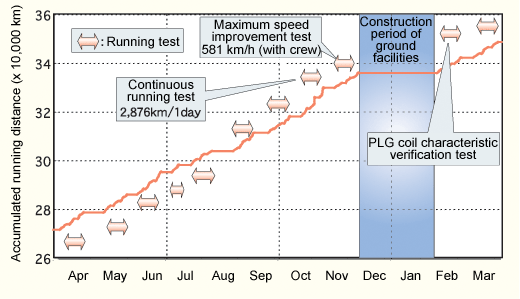
Fig.1 Profile of running tests in fiscal 2003
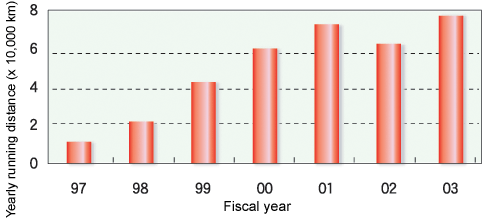
Fig.2 Profile of the yearly running distance since fiscal 1997
(2) Continuous running tests
In fiscal 2003, high-speed running tests were performed on a heavier schedule than in fiscal 2002. In addition, a test was also performed to cover a distance equivalent to 2,500 to 3,000 km within a day, assumed to be the daily distance covered by a commercial line train was covered in one day. The running distance achieved in the test was over 2,800 km. The running tests were conducted by repeating a pattern of acceleration to 400 km/h or more for high-speed running and then decelerating to a stop. Tests were carried out for on-board facilities such as the superconducting magnet and supporting and giding gears more frequently than on commercial lines, and tests for power supply facilities, including the section switch, were performed with a frequency similar to that of commercial lines. The test results verified a high level of reliability and stability in the current system.
(3) Maximum speed improvement test
A speed improvement test exceeding the designed maximum of 550 km/h was conducted in stages to verify the reliability of the current facilities in relation to high-speed running performance. On December 2, a maximum speed of 581 km/h was reached twice.
As per the run curve shown in Fig.3, a maximum speed of 581 km/h was reached after 92 seconds of acceleration on a 40 8.5 km downward grade section from Kofu on the left side. The speed was maintained over a distance of 900m before decelerating to a stop. During running, vibration and displacement of vehicle components, including the superconducting magnet, were found to be within acceptable limits, allowing the delivery of stable performance. This verified the high reliability of the whole system for high-speed running. 8.5 km downward grade section from Kofu on the left side. The speed was maintained over a distance of 900m before decelerating to a stop. During running, vibration and displacement of vehicle components, including the superconducting magnet, were found to be within acceptable limits, allowing the delivery of stable performance. This verified the high reliability of the whole system for high-speed running.
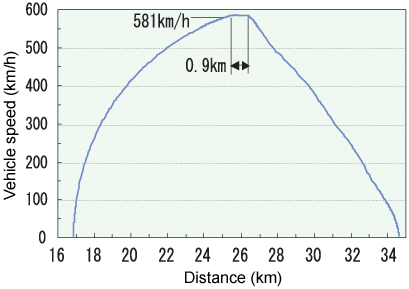
Fig.3 Run curve for the maximum speed run of 581 km/h
(4) Verification test of PLG coil characteristics
To reduce the costs of the ground coil by simplifying its configuration, a "8"-shaped (120º pitch arranged) Combined Propulsion, Levitation and Guidance system (PLG) coil with high withstand voltage (33 kV specification) was developed, simultaneously serving the three functions of propulsion, levitation, and guidance. The PLG coil improves the lift/drag ratio by changing the coil configuration in the mold from a "88"-shape (60º pitch arranged) to a "8"-shape (120º pitch arranged), doubling the levitation coil pitch to 0.9m. Additionally, by making the upper and lower coils asymmetric, the vibration force on the superconducting magnet is reduced. Based on a pre-examination of the effects of this improvement in characteristics, by adopting the "8"-shape along with the reduction in magnet lateral vibration contributed by the asymmetric coils, an increase in the lift-to-drag ratio of about 30% at 500 km/h can be expected (Fig.4).
A verification test was conducted into the electromagnetic force characteristics and dynamic characteristics when vehicles pass using a temporary installation of the "8"-shaped PLG coil on the Yamanashi Test Line (Fig.5). The test results showed that the PLG coil conformed to the desired characteristics.
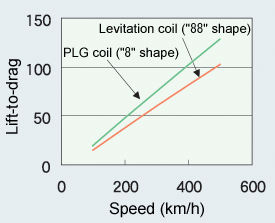 | 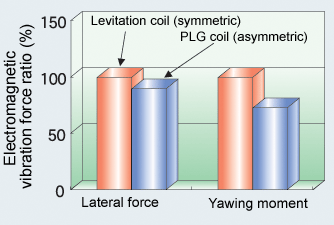 |
| (a) Improvement of the lift-to-drag ratio | (b) Reduction in vibrating force on the superconducting magnet |
Fig.4 Characteristic improvement effects of the PLG coil with the "8" shape and vertically asymmetric coils
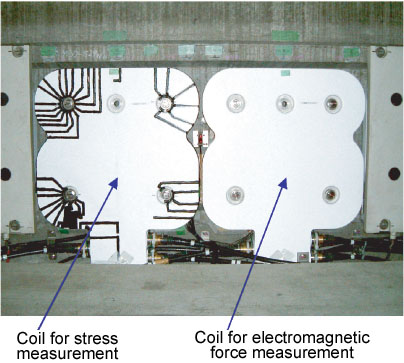
Fig.5 Temporary installation of the PLG coil
|